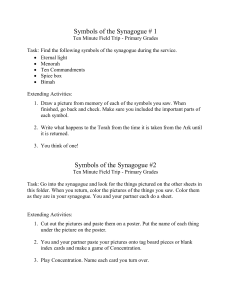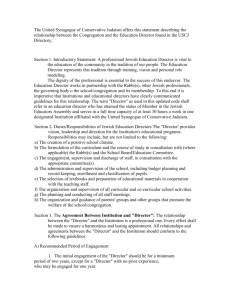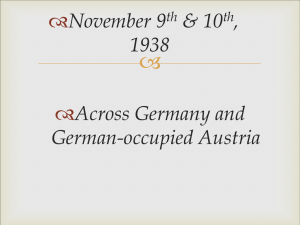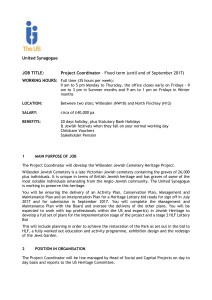Gwoździec wooden synagogue
advertisement
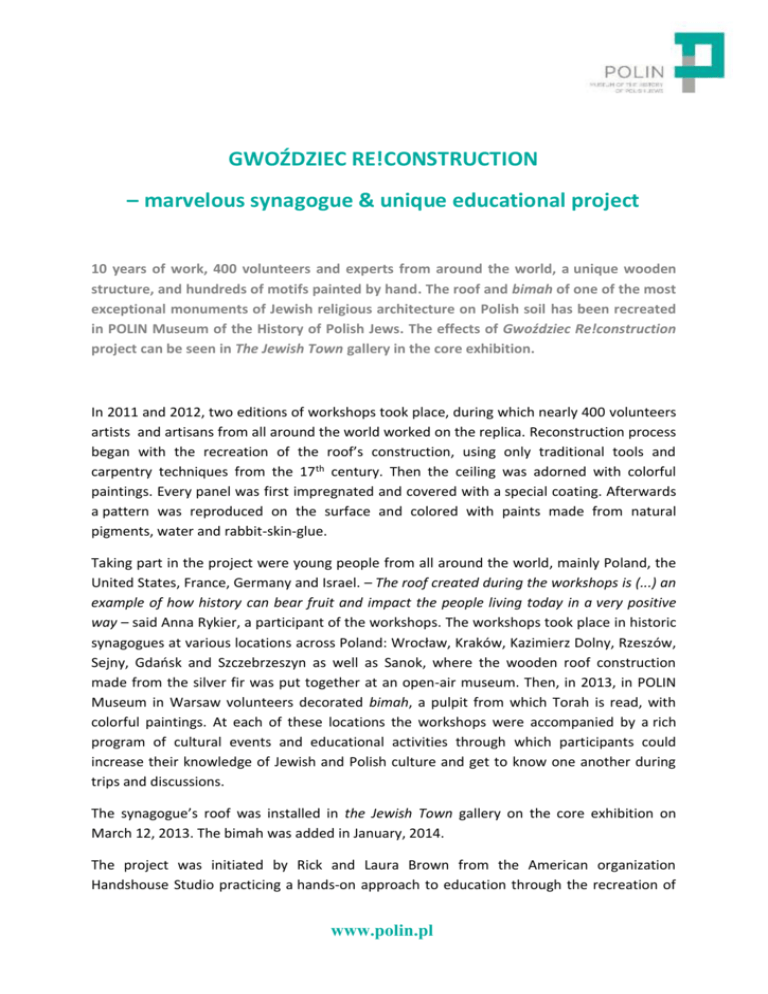
GWOŹDZIEC RE!CONSTRUCTION – marvelous synagogue & unique educational project 10 years of work, 400 volunteers and experts from around the world, a unique wooden structure, and hundreds of motifs painted by hand. The roof and bimah of one of the most exceptional monuments of Jewish religious architecture on Polish soil has been recreated in POLIN Museum of the History of Polish Jews. The effects of Gwoździec Re!construction project can be seen in The Jewish Town gallery in the core exhibition. In 2011 and 2012, two editions of workshops took place, during which nearly 400 volunteers artists and artisans from all around the world worked on the replica. Reconstruction process began with the recreation of the roof’s construction, using only traditional tools and carpentry techniques from the 17th century. Then the ceiling was adorned with colorful paintings. Every panel was first impregnated and covered with a special coating. Afterwards a pattern was reproduced on the surface and colored with paints made from natural pigments, water and rabbit-skin-glue. Taking part in the project were young people from all around the world, mainly Poland, the United States, France, Germany and Israel. – The roof created during the workshops is (...) an example of how history can bear fruit and impact the people living today in a very positive way – said Anna Rykier, a participant of the workshops. The workshops took place in historic synagogues at various locations across Poland: Wrocław, Kraków, Kazimierz Dolny, Rzeszów, Sejny, Gdańsk and Szczebrzeszyn as well as Sanok, where the wooden roof construction made from the silver fir was put together at an open-air museum. Then, in 2013, in POLIN Museum in Warsaw volunteers decorated bimah, a pulpit from which Torah is read, with colorful paintings. At each of these locations the workshops were accompanied by a rich program of cultural events and educational activities through which participants could increase their knowledge of Jewish and Polish culture and get to know one another during trips and discussions. The synagogue’s roof was installed in the Jewish Town gallery on the core exhibition on March 12, 2013. The bimah was added in January, 2014. The project was initiated by Rick and Laura Brown from the American organization Handshouse Studio practicing a hands-on approach to education through the recreation of www.polin.pl historical structures. Thanks to cooperation between POLIN Museum and the Association of the Jewish Historical Institute in Poland with Handshouse Studio and the Timber Framers Guild, a unique object was created, restoring memory about the skill of artisans and Jewish painters from the old Republic. The project was funded by Ms. Irene Pletka, POLIN Museum Donor from Australia. Wooden synagogues in Poland Wooden Jewish religious buildings erected in Poland were a unique phenomenon on a global scale. Regrettably, none of them has survived till the present day. The synagogue of Gwoździec is among the ones most comprehensively documented. Raised in 1640 and burnt down to the ground during World War II, the meticulously adorned wooden synagogue of Gwoździec is a symbol of the uniquely Jewish, but also decidedly Polish character of the civilization created by the Polish Jews. The synagogue’s polychromes gave “the impression of a carpet,” wrote Karol Maszkowski in his work The Wooden Synagogue in Gwoździec in 1890. The ceiling and walls were decorated with floral motifs and images of animals, as well as with zodiac signs, messianic symbols and abbreviations from prayers. Gwoździec is a town near Kołomyja (today in the Ukraine). The precise date of the arrival of Jews in the town is not known. The first mention of their presence dates back to 1635. According to the 1765 census there were 541 Jews living in Gwoździec, making up about 60 percent of the whole population. The synagogue was the central place of the Jewish part of the town. GWOŹDZIEC IN NUMBERS: 30 tons – the weight of the synagogue’s roof 29 sections making up the sides of the roof 13 sections forming the coves and lantern 67 images of mythical animals 1000 flowers, bunches of grapes and blossoms 8 years of preparatory work, including the collection of archival material 400 volunteers from all over the world taking part in the workshops Media contact Grzegorz Tomczewski Media Relations gtomczewski@polin.pl +48 535 050 204 Iwona Oleszczuk ioleszczuk@polin.pl +48 604 451 422
